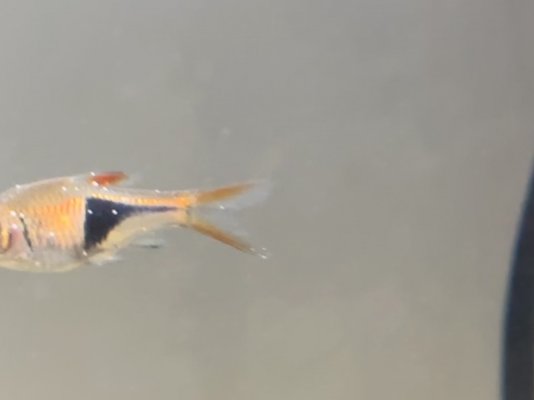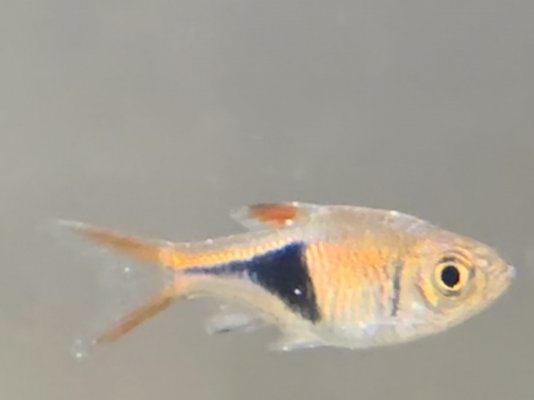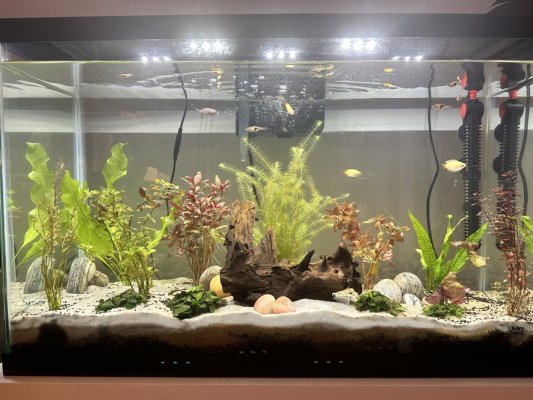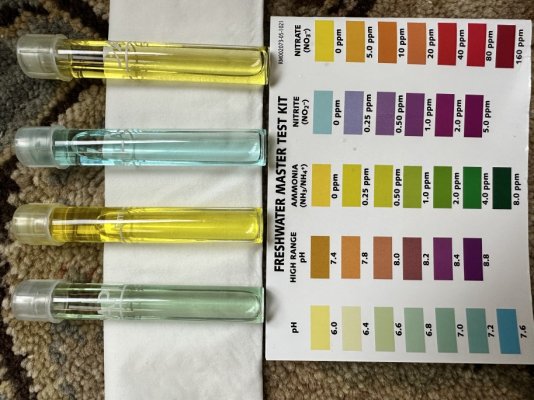Jabubaoski
Aquarium Advice Apprentice
- Joined
- Sep 24, 2022
- Messages
- 22
Hi all,
My tank is 3.5 weeks old, 29 gallon, heavily planted (14 plants from anubias, myrio, tiger lily, dwarf lily, crypts to fern) and has 4 harleys, 6 medaka, 3 honey gourami + 1 dwarf rainbow (it was given to me for free). They’ve been in the tank for 1 week, I started a fishless cycle but added fish when the inverts got out of control. My water perimeters have been consistent the last 2 weeks: ph7, ammonia, nitrite and nitrate 0 (api master kit), I hope that means I’m cycled but I’m not sure.
The biggest Harley and the lone rainbow are kind of bullies, chasing the others at top speed and the Harley nips too. I do want to expand their shoal but not until I see the perimeters maintain for a bit longer.
Today I found 2 white spots on the bully Harley and 1 white spot on the rainbow. They’re raised and look like a fleck of salt. I suspect it’s ich or stress ich. I’ve gotten different advice from LFS, 1 said use ich x, 1 said to feed metroplex + focus + garlic guard.
Given I have a heavily planted tank and might still be in the process of cycling - what to do?? I’m not sure all my fish can handle heat. The temp is 77-78 the tank.
I tested this morning using api master kit, same as before , ph7, 0 everything else. I did a 15% water change yesterday.
Thank you in advance!!
My tank is 3.5 weeks old, 29 gallon, heavily planted (14 plants from anubias, myrio, tiger lily, dwarf lily, crypts to fern) and has 4 harleys, 6 medaka, 3 honey gourami + 1 dwarf rainbow (it was given to me for free). They’ve been in the tank for 1 week, I started a fishless cycle but added fish when the inverts got out of control. My water perimeters have been consistent the last 2 weeks: ph7, ammonia, nitrite and nitrate 0 (api master kit), I hope that means I’m cycled but I’m not sure.
The biggest Harley and the lone rainbow are kind of bullies, chasing the others at top speed and the Harley nips too. I do want to expand their shoal but not until I see the perimeters maintain for a bit longer.
Today I found 2 white spots on the bully Harley and 1 white spot on the rainbow. They’re raised and look like a fleck of salt. I suspect it’s ich or stress ich. I’ve gotten different advice from LFS, 1 said use ich x, 1 said to feed metroplex + focus + garlic guard.
Given I have a heavily planted tank and might still be in the process of cycling - what to do?? I’m not sure all my fish can handle heat. The temp is 77-78 the tank.
I tested this morning using api master kit, same as before , ph7, 0 everything else. I did a 15% water change yesterday.
Thank you in advance!!




